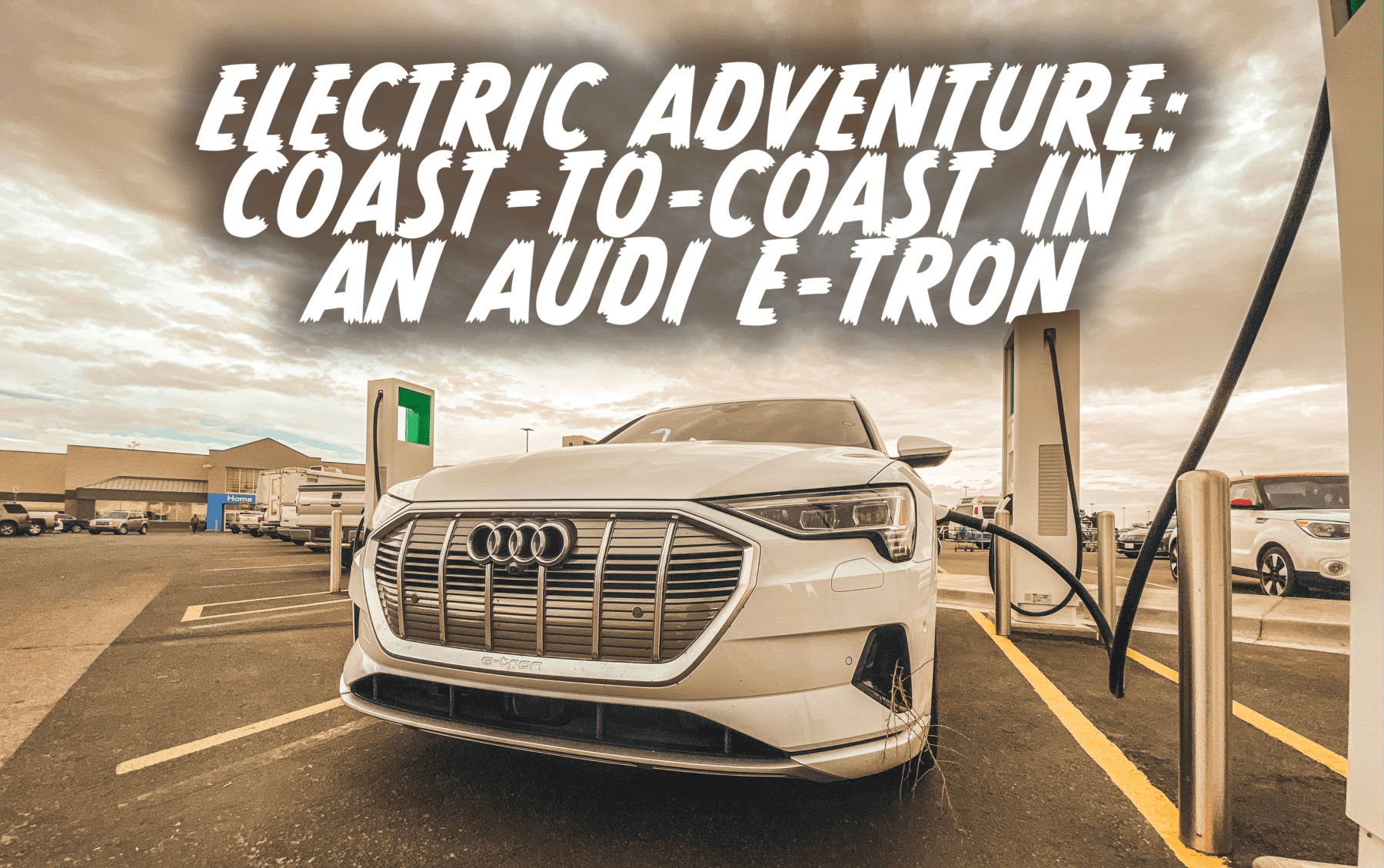A road trip is supposed to be fun. You’re supposed to stop, take in the sights, and enjoy the journey. Blasting across the United States to prove a point is sort of the opposite fo the regular road trip ideal. But that’s what we just did in an Audi e-tron. From the Redball Garage in New York City to the Portofino Inn in Redondo Beach, three of us just went from coast to coast in an electric vehicle.
Kelley Blue Book’s Micah Muzio along with myself and Josh Ostrander (representing the team from KBB’s new mobility outfit Ride.Tech) flew to New York City. We picked up our Audi e-tron and set about preparing for the trip ahead. The car was fitted with smaller 19-inch wheels prior to our arrival, and then we pumped the tires up to 50 psi. In the back, a pair of full size spares ate up most of our luggage space.
When planning such a trip, you start with what you’re assumed range will be and then you throw that out the window. We arrived in New York City to find the first real cold snap of the season. Temperatures were dropping below 40 degrees, which means our available driving range also began to dip. Our very first stop of the trip was changed from Carlisle, PA to somewhere in New Jersey.
The good news though, is that the e-tron is capable of recharge speeds of 150kW. That means we can go from nearly empty to an 80% full battery in as little as 30 minutes. Some of our stops will be even shorter, while others require us to wait for a full recharge. Our longest stop of the trip is in Woodstock, Virginia where we need to go from 5% to 95%. This was at 2am. It was freezing cold outside. And we sat there for one hour and 40 minutes. The fastest charging stop? A 15 minute splash and dash in Pecos, Texas. We came in with 43% remaining and filled the e-tron up to 84%
The journey was long. Our total time from start to finish was 60 hours and 36 minutes. Not exactly record breaking pace here, as the current EV record sits at a bit over 45 hours. But the e-tron performed quite well. It’s built with the same German-minded highway stability the gas-powered Audi’s enjoy, and thus it chewed up the Interstate mileage. We could gain range when necessary by slowing down for a bit, and then we could speed up and hold that speed efficiently. Our total average speed was 50.34 miles per hour. Our average moving speed was a more impressive 86 mph.

Because of the current layout of the Electrify America network, we had to go farther south than we would’ve liked. This means we covered the entirety of Texas, all the way down to El Paso before heading back up through New Mexico, Arizona, and on into California. But that network is constantly growing, so better routes can be fun. In fact, there’s a smarter route that cuts through Colorado, but we didn’t want to go that way during the colder months.



Most of the charging stations are located in Walmart parking lots. This is quite convenient because many of those stores are open 24 hours a day. So bathrooms, snacks, and other odds and ends are available.

Would I make the trip again? Yes. I’d love to give this another go when the weather gets a bit warmer. Still, the goal here wasn’t to set a blistering pace. It was simply to show that it can be done in a non-Tesla electric vehicle. The Supercharger network is robust, but locked down. Running on the Electrify America network, we had plenty of places to stop and juice up. And we didn’t need to stick to that network. We did though, and used their nice clean app to help locate the chargers, pay for the charging, initialize the process, and keep a record of it all as well.


[Disclaimer: Audi provided us with the use of the e-tron and included a pair of spares, which we thankfully didn’t need to use.]


Leave a Reply